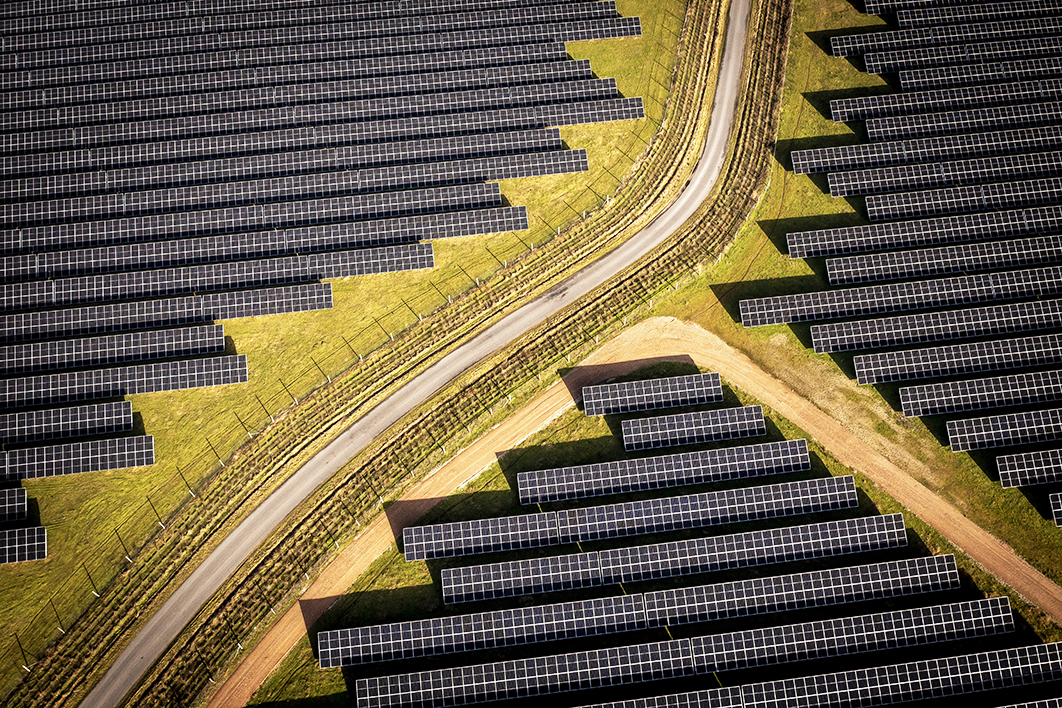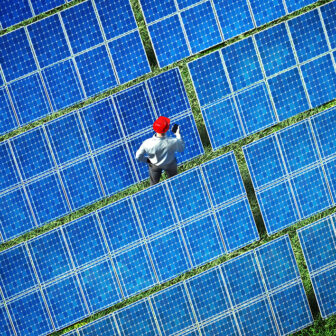Recent news on global heating makes it easy to give way to despair. After a brief slowdown during the lockdown phase of the Covid pandemic, emissions of greenhouse gases have continued to rise. Even coal, which reached a plateau in 2013, has bounced back as a result of the Russian gas cut-off, and hit an all-time high in 2022.
But there are some bright spots. In particular, there’s a good chance that 2023 will be the year coal use finally begins a sustained decline, and therefore the year carbon dioxide emissions from electricity generation start to fall. And the transition, once it begins in earnest, will accelerate rapidly.
This is by no means a sure thing. The International Energy Agency predicts that the current equilibrium, in which nearly all new electricity demand will be met by solar PV and wind, will be sustained for several years to come. That would leave coal and gas use almost unchanged. But the IEA has a long track record of underestimating solar and wind, and there are plenty of reasons to think that this has happened again
Total electricity demand is currently a bit over 25,000 terawatt hours a year, growing at an annual rate of around 3 per cent. So, to meet the growing demand, we need to generate an additional 750 terawatt hours from solar and wind. (Other carbon-free sources, such as hydro and nuclear, have been essentially static.)
Assuming solar PV generates at full power for 2000 hours per year, each gigawatt of solar capacity generates an annual two terawatt hours of electricity. Meeting additional demand with solar alone therefore requires adding 375 gigawatts of solar PV per year, with any shortfall made up by wind.
The good news is that is already happening. BloombergNEF estimates 315 gigawatts of solar will be installed in 2023, up from 268 gigawatts in 2022. Additions of wind power have been around one hundred gigawatts a year recently, which amounts to between 250 and 300 terawatt hours per year.
Assuming the 2022 installations are already connected to global grids, we should see a reduction in carbon-based electricity generation this year, followed by steadily larger reductions. That will be true even if electricity begins to substitute for oil and gas in transport, heating, cooking and so on.
Underlying this shift is the steadily decreasing cost of wind and, even more, solar power. This trend was interrupted by the supply shocks of the pandemic and Putin’s war, which led to a big increase in the price of polysilicon as well as coal and gas. But while coal and gas prices remain high, polysilicon, though still volatile, has dropped back to more normal levels.
More importantly, new investment in solar PV is raising production capacity even further. Polysilicon output is heading for 500 gigawatts by the end of this year — which will translate fairly quickly into production and installation of solar cells — and as much as 700 gigawatts by 2025. Installations on that scale would imply a rapid shutdown of existing coal-fired and gas-fired generation.
Is this feasible? In terms of simple economics, the answer is clearly yes. Solar PV and wind have been cheaper than new coal and gas for some time. In many places they are already cheaper than existing coal and gas. And, as the example of South Australia shows, the problems of intermittent supply can be resolved with a combination of battery storage, interconnection and a modest amount of gas-fired power, in a system which now relies on wind and solar for as much as 80 per cent of its power.
The task is even simpler where pumped hydropower is available for storage, or where existing nuclear power plants can supply any remaining demand for twenty-four-hour power. (New nuclear is hopelessly uneconomic.)
And technological progress continues apace. Commercially available solar cells now routinely exceed 20 per cent efficiency; new multi-junction technologies are approaching 50 per cent.
Concerns that shortages of “critical minerals” like lithium and cobalt will constrain the process appear misplaced. Some sources of these minerals — lithium brines and cobalt mines in Africa, for instance — are indeed problematic, as is China’s dominant position as a supplier of refined ores and batteries. But there are always alternative sources.
Australia has huge resources of lithium, derived from ordinary hard-rock mining. We are now developing a refining capacity, and could easily manufacture batteries for domestic use and export. Similarly, the price of cobalt has plunged recently, partly because of competition from lithium and partly because new supplies are available as a by-product of Indonesian nickel plants.
As the urgency of ending our reliance on coal, gas and oil has become more evident, supportive policies have reduced costs. The result is that solar panels are expected to become cheaper in 2023 and beyond. In Europe, the need to respond to the cut-off of Russian gas and oil has led to the removal of some of the NIMBY obstacles to wind farms and transmission lines that have delayed the transition.
The big exception to all of this is China, where coal-fired power has resurged. Up to one hundred new coal plants have been granted permits in the last year. This doesn’t make economic or geopolitical sense for China. It does, however, make plenty of sense for regional governments desperate to keep up a flow of large projects, both to maintain employment in coal-related industries and for the corruption opportunities such projects inevitably generate. It seems likely that most of these plants, if they are completed at all, will lose money and either close early or force the early closure of competing coal-fired plants.
In our current energy system, electricity is only part of the story, accounting for around a third of energy-related emissions. But electrification, based on carbon-free sources, is the only realistic path to decarbonising transport and producing the hydrogen needed to replace coal and methane gas in industrial uses. If this is to be achieved in reasonable time, even 700 gigawatts of new solar every year won’t be enough. Production will have to shift to terawatt scale.
There’s still no sign of the urgency needed here, certainly not in Australia. But in electricity at least, progress has been faster than seemed possible ten or even five years ago. •




